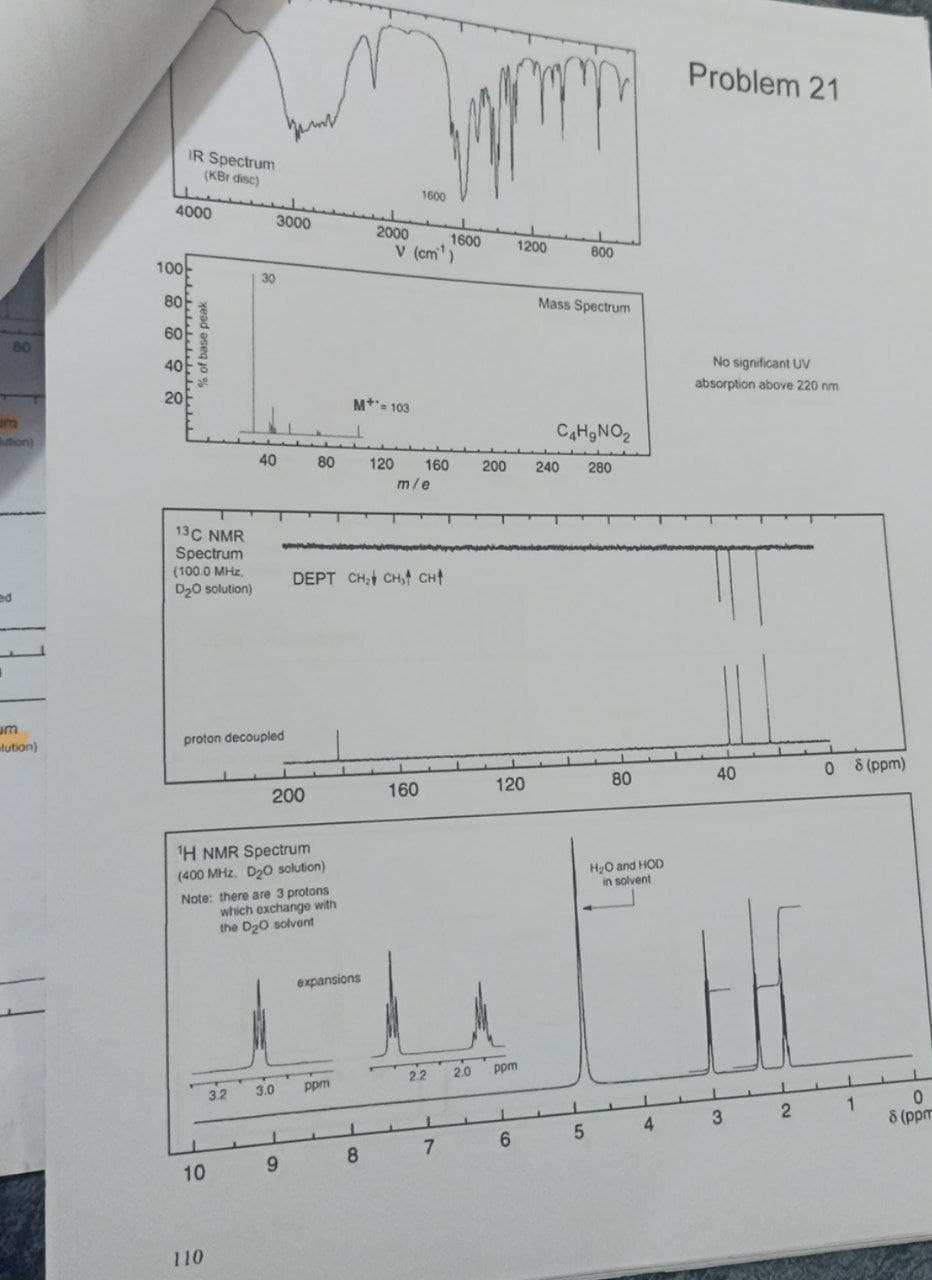IR Spectrum (KBr disc) ستا 4000 100 80 60 20 % of base peak 13C NMR Spectrum (100.0 MHz, D₂0 solution) 30 40 yu 3.0 3000 proton decoupled 200 ¹H NMR Spectrum (400 MHz. D₂0 solution) Note: there are 3 protons which exchange with the D₂0 solvent 3.2 2000 expansions ppm 1600 M+= 103 80 120 160 m/e DEPT CH₂ CH₂ CH 160 1600 V (cm¹) 2.2 200 120 2.0 ppm J 800 Mass Spectrum 1200 C4H₂NO₂ 280 240 80 H₂O and HOD in solvent Problem 21 No significant UV absorption above 220 nm 40 2 08 (ppm) 1 0 loom
Analyzing Infrared Spectra
The electromagnetic radiation or frequency is classified into radio-waves, micro-waves, infrared, visible, ultraviolet, X-rays and gamma rays. The infrared spectra emission refers to the portion between the visible and the microwave areas of electromagnetic spectrum. This spectral area is usually divided into three parts, near infrared (14,290 – 4000 cm-1), mid infrared (4000 – 400 cm-1), and far infrared (700 – 200 cm-1), respectively. The number set is the number of the wave (cm-1).
IR Spectrum Of Cyclohexanone
It is the analysis of the structure of cyclohexaone using IR data interpretation.
IR Spectrum Of Anisole
Interpretation of anisole using IR spectrum obtained from IR analysis.
IR Spectroscopy
Infrared (IR) or vibrational spectroscopy is a method used for analyzing the particle's vibratory transformations. This is one of the very popular spectroscopic approaches employed by inorganic as well as organic laboratories because it is helpful in evaluating and distinguishing the frameworks of the molecules. The infra-red spectroscopy process or procedure is carried out using a tool called an infrared spectrometer to obtain an infrared spectral (or spectrophotometer).

Step by step
Solved in 3 steps with 3 images








